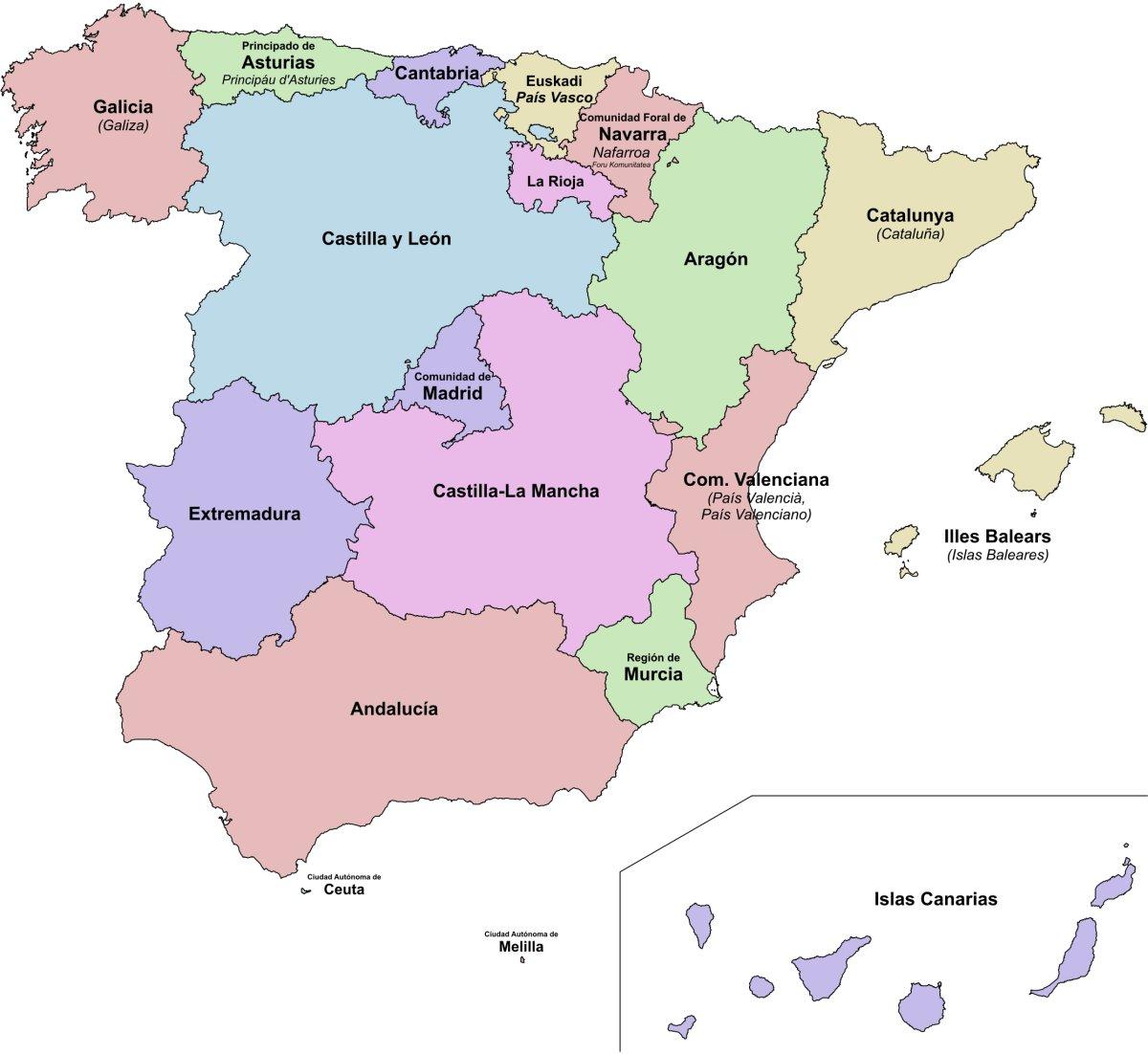20 Interesting Facts About the Spanish Language
Known as a popular destination, Spain has one of the richest and oldest cultures in the world. The rich and diverse Spanish language has been adopted in many countries and is one of the most widely spoken languages in the world.
While it is useful to know the most common Spanish expressions, knowing a few facts about the language can be just as useful.
Discover 20 interesting facts about the Spanish language in this post. 🇪🇸
The Best Spanish Language Facts
Spanish is among the most spoken languages in the whole world. It has a huge cultural and historical influence.
There are some very interesting facts I thought you should know about it, so today I am listing my best fun facts about the Spanish language for you:
1. There are over 400 million Spanish speakers in the world
The most spoken languages in the world are Chinese, Spanish, and English, in that order. You might think of English as the universal language because it has become standard, but Spanish is the mother tongue of 400 to 450 million people, whereas English speakers are merely 335 million.
Spain has indeed had a very important influence on countries in South America mostly, like Cuba, Mexico, or Argentina. Just like Portugal, the United Kingdom, and France, Spain was one of the most conquering countries in the world, for several centuries after Christopher Columbus’ discovery.
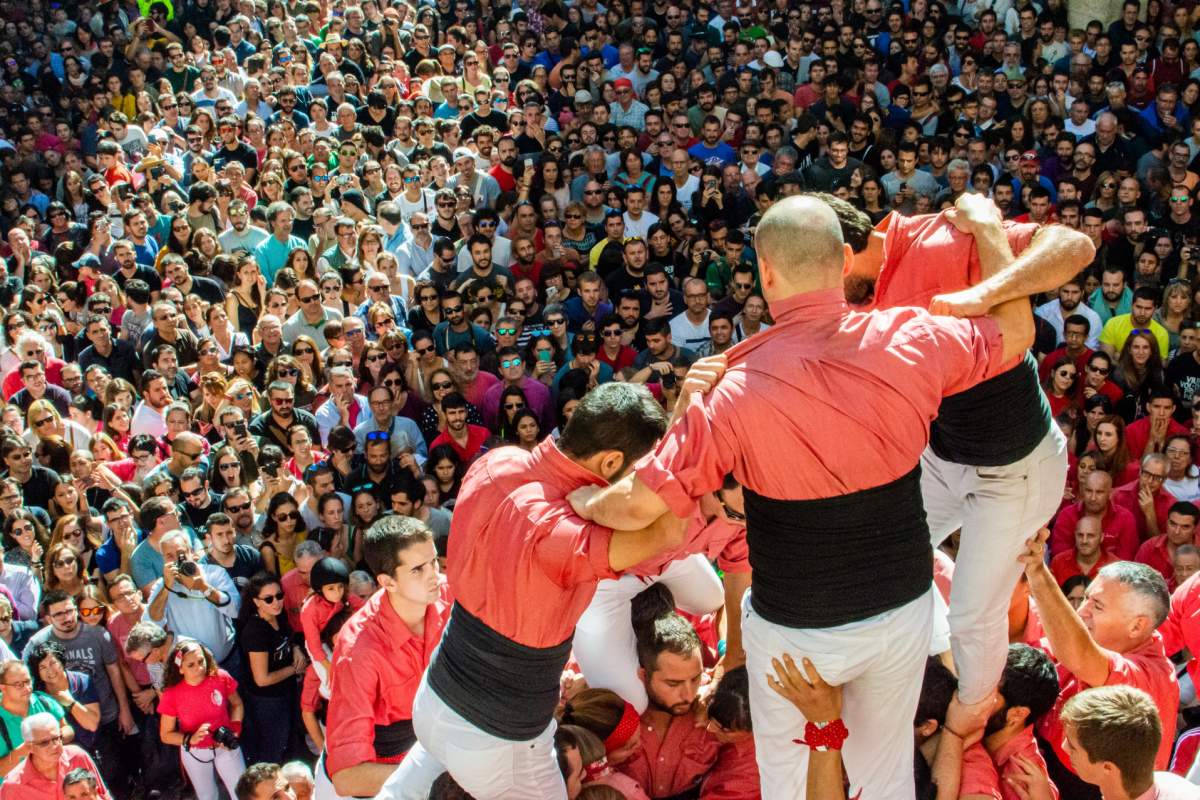
A castell traditionally built at festivals in Spain
2. Spanish is the official language in 21 countries
Speaking of which, after 1492, it is said that Spaniards took control of the countries for at least three centuries. They slowly but surely expanded through the Caribbean Islands, then half of South America (shared with Portugal), then most of Central America, and finally North America. An estimated 1.86 million Spanish people set sail in America during the colonial times, and 3.5 million emigrated there later on.
As a result, Spanish is today the official language in 21 countries, most of them being located in Central and South America.
3. Spanish is a phonetic language
Though English and Spanish share similarities, one of the biggest differences between them is that Spanish is a phonetic language, while English is not.
In case you do not know what phonetics means, it is basically a language where you pronounce every single letter, and every one of them has a specific and dedicated sound. That makes the process of learning Spanish much easier, compared to languages like French where many letters are silent, and where if you combine some of them together, the sound becomes completely different.

4. Spanish has Latin roots, like Italian
The Roman Empire has had arguably the biggest influence on Europe, and maybe on the whole world. It is the foundation of many languages we know to this day, as well as traditions, culture, and history. Regarding languages, Latin is the ancestor of several of them, like Italian or Spanish.
From the 13th to the 16th centuries, Toledo, back then the capital of Spain, started to develop a standard written language for the whole country, many of which were based on Latin. Madrid followed the process through the 16th century.
5. More and more people want to learn Spanish
Spain has always been a very important travel destination as well as a foreign study center. In both schools and universities, it has become easier and easier to learn Spanish, even in faraway countries.
Nowadays, it is becoming so important that it has spread through all classes in the world, and is very popular in Asia, probably because of its importance in global markets. The use of Spanish online has risen by 1,314% in the last 15 years, and this number is only becoming bigger and bigger.

6. Arabic influenced Spanish a lot
Spain was ruled by Arabic forces for many centuries, before the famous “Reconquista”, when Christian armies took control of the area. The country itself developed very quickly thanks to Arabic art, architecture, and technology. The language however has been extremely influenced, and the Spanish we know today is actually a mix of Arabic and old Spanish.
Though the Moors were gradually expelled from the Iberian Peninsula, a whopping 8,000 Arabic words were kept in the Spanish language. Some historic sites also come from Arabic, like La Alhambra.
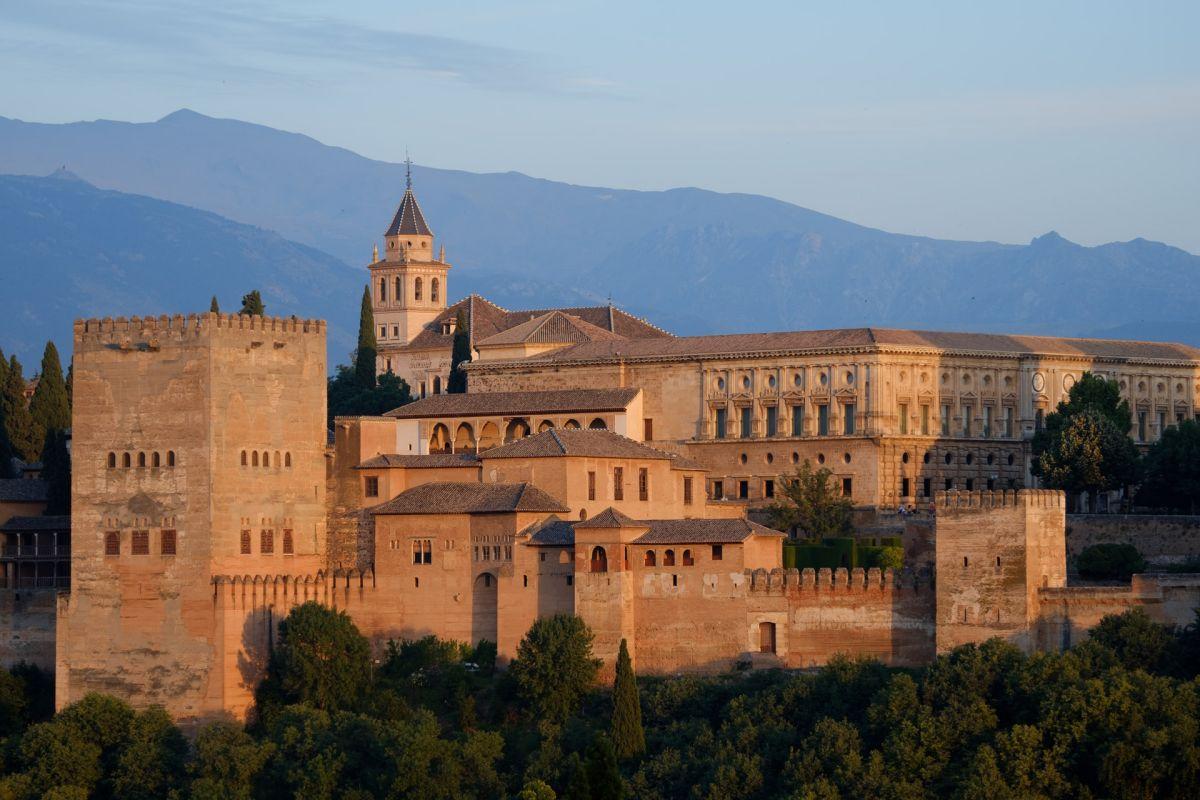
7. The United States will become the most important Spanish speaking country by 2050
At the moment, Mexico is the biggest Spanish-speaking country in the world, with almost 130 million inhabitants. Among them, almost everyone speaks Spanish.
However, if the growth projections stay the same for the upcoming years, the most important Spanish-speaking country might become the United States, by 2050. You might not know that, but the US is home to 41 million native Spanish speakers (13% of the population) and 12 million bilingual Spanish speakers on top of that. It is already ahead of Spain itself and is looking to dethrone Mexico.
8. The language is ruled by the Royal Spanish Academy
The Royal Spanish Academy, located in Madrid, was founded in the 18h century by the 8th Duke of Escalona, Juan Manuel Fernández Pacheco. Since then, it has published grammar rule books and dictionaries, adopted by Spain itself but also other Spanish-speaking countries.
It is officially responsible for being the ruler of the Spanish language, and it operates several smaller language academies in all the other Spanish-speaking countries. The motto of the Academy is “Limpia, fija y da esplendor” (“To clean, make certain, and give splendor”).
9. Spanish is a very easy language to learn
As I have already told you, Spanish is a phonetic language. That makes it one of the easiest languages to discover and to learn for newcomers since once you know the alphabet, you can easily write and read anything because the sounds stay the same in any sentence.
The US Foreign Service Institute carried out a study some years ago, and it turns out that it takes approximately 23 to 24 weeks for a native English speaker to become professionally proficient in Spanish. As a comparison, it would take you 88 weeks with 5 hours/day of intensive learning to become proficient in Chinese.
10. Spanish was the official diplomatic language until the 18th century
Nowadays, French is the official diplomatic language in the world, though not spoken by as many as Chinese, Spanish, or English. It was associated with high society and considered sophisticated, so many people decided to learn French to improve both their status and their wealth.
However, French only started to spread out through Europe after the 13th century and became the most spoken language in Europe in the middle of the 14th century. Before that, Spanish was the official diplomatic language… until the 18th century.
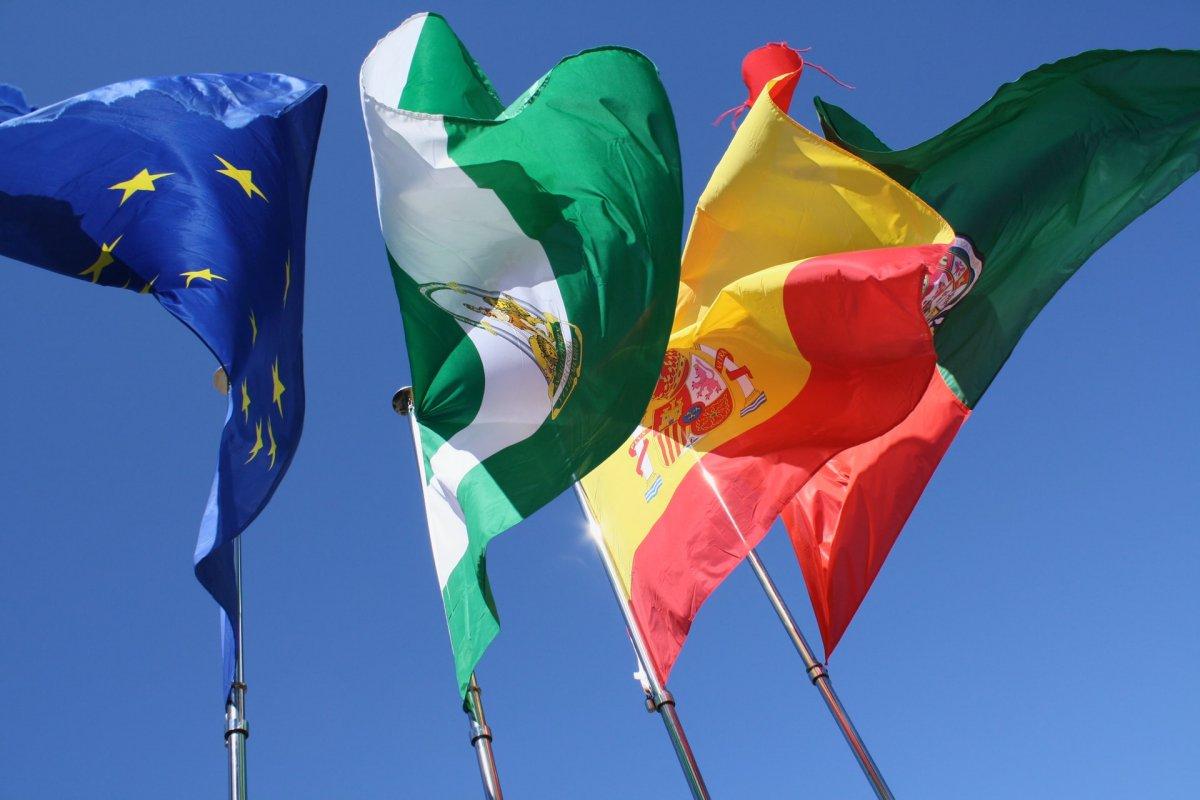
11. Exclamation and question marks are inverted in Spanish
Long ago, Spain used a single question or exclamation mark at the end of a sentence, just like most languages in the world. Since around 1754, Spanish has had this very peculiar specificity of using inverted question and exclamation marks before the exclamation/interrogation as well. For instance, you would say “Hernán, where are you going?” in English, but in Spanish, it would be written like this: “Hernán, ¿Adónde vas?”.
You will not hear any difference in Spanish questions, but you will have to write and read them like this.
12. Spanish is also known as Castilian
You might hear Spanish speakers refer to their language as both “Español” and “Castellano”, which means “Castilian”, from the historical region of Castile.
Depending on regions, you might hear either of those terms, because they can reflect social and political views. In English, “Castilian Spanish” is most of the time used to refer to the dialects in northern and central continental Spain. Sometimes, it is used a bit more generally to refer to the Spanish spoken in Spain (that is, not in Latin America).
13. Spanish is classified as a Romance language
French, English, Russian, German and the Slavic and Scandinavian languages are all belonging to the Indo-European languages, just like Spanish. Indo-European is a category of languages regrouping, far in the East, the Indian subcontinent, and on the other side in the West, lots of European countries.
On top of that, Spanish is also a Romance language, alongside French, Italian and Portuguese. That comes down to the roots of the language, which shares more similarities with other European languages than you might think. Knowing that is a great way to study its history and its culture.
14. The first Spanish text was written over 1,000 years ago
Glosses of Saint Emilianus (“Las Glosas Emilianenses”) was written in 964. They were considered to be the first-ever written Spanish texts surviving to this day, laying foundations for one of the most popular languages in the whole world. They are basically noted in Spanish and Basque on a religious Latin manuscript.
However, in 2010, the Real Academia Española declared that the actual first manuscripts of written Spanish already existed in the 9th century, in the Burgos province. They are known as “Cartularies of Valpuesta”.
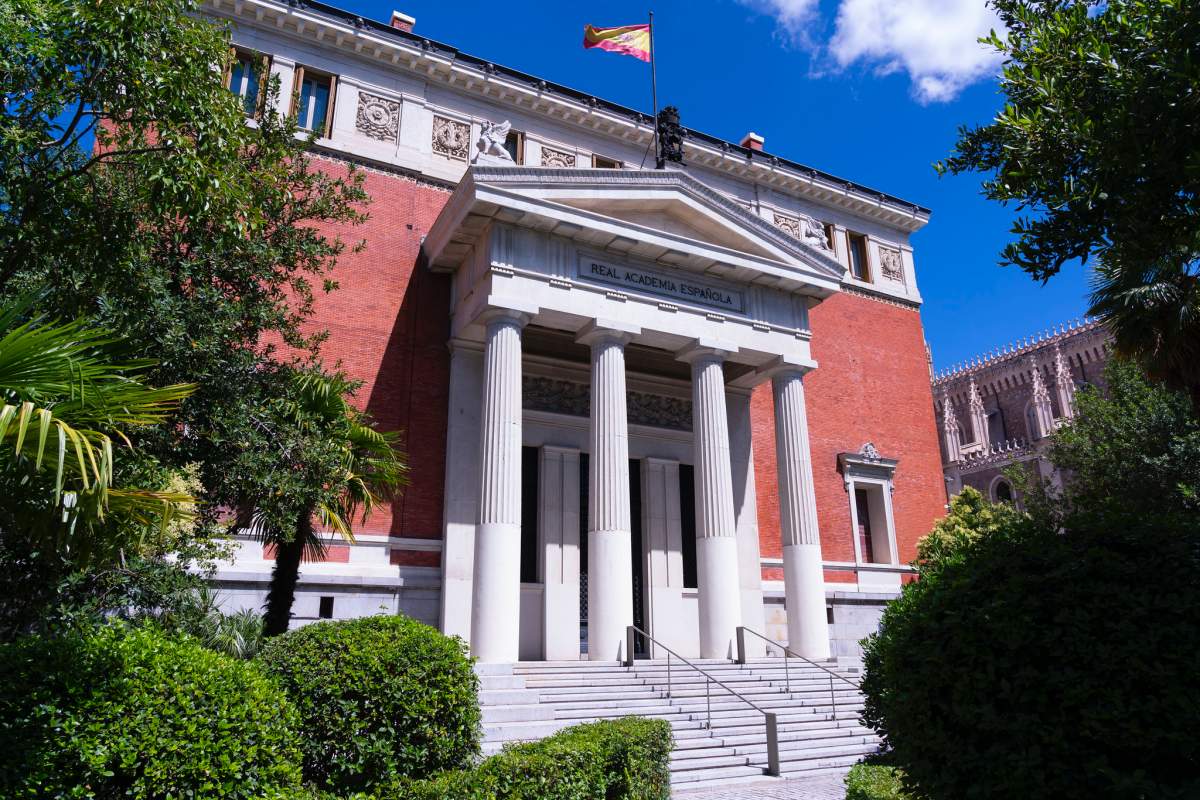
RAE / CC BY-NC-ND / The Real Academia Española
15. The Spanish language has long sentences… and is poetic
If you have to translate an English text to Spanish, be prepared, as it is likely to expand by 15 to 25 percent. That is not due to the average length of Spanish words, but rather that Spanish is way more poetic than English as a whole. It is also more detailed and more expressive.
English, on the other hand, is a language that easily summarizes anything, in very few words. A very stunning example of that is the sentence “en el sentido de las agujas del reloj”, translated in English… to “clockwise”.
16. Spanish has some similarities with English
With radically different roots (Roman and Germanic), Spanish and English are very different generally speaking. The way they each write sentences, the amount of detail they do or do not put in their phrases, as well as the intonation of both languages, are examples of severe dissimilarities.
However, just like French, Spanish loans quite a few words from English, and they are very used to this day. For instance, balance, coma, area, and nostalgia are all exactly the same in those two languages. Be wary of some of them though: “embarazada” means “pregnant” and “contestar” means “to answer”.
17. There are multiple Spanish dialects and varieties
Latin is the root of all Romance languages. European Spanish descended from Latin and is today very different from the Spanish spoken in Latin America. There, there are also numerous differences in the language as well.
Do not worry though, if you learned “classic” Spanish, you will still be able to communicate with anybody, because there are many contrasts, but they are minor. Just like a lot of historical countries, the language in Spain and in its colonies has evolved, and some elements were sometimes either kept or abandoned.
18. Spanish grammar was published in 1492
You probably know 1492 to be the year in which Christopher Columbus and his three famous ships, the Nina, the Pinta, and the Santa Maria, set sail in America for the first time in European history.
However, in that same year, Antonio de Nebrija, a humanist and a grammarian published the famous Gramática de la Lengua Castellana, setting in stone Spanish grammar onwards. This detailed study of old Spanish and its rules is a true feat of strength, as it is the first complete grammar of any Roman language, from which they will all inspire themselves.
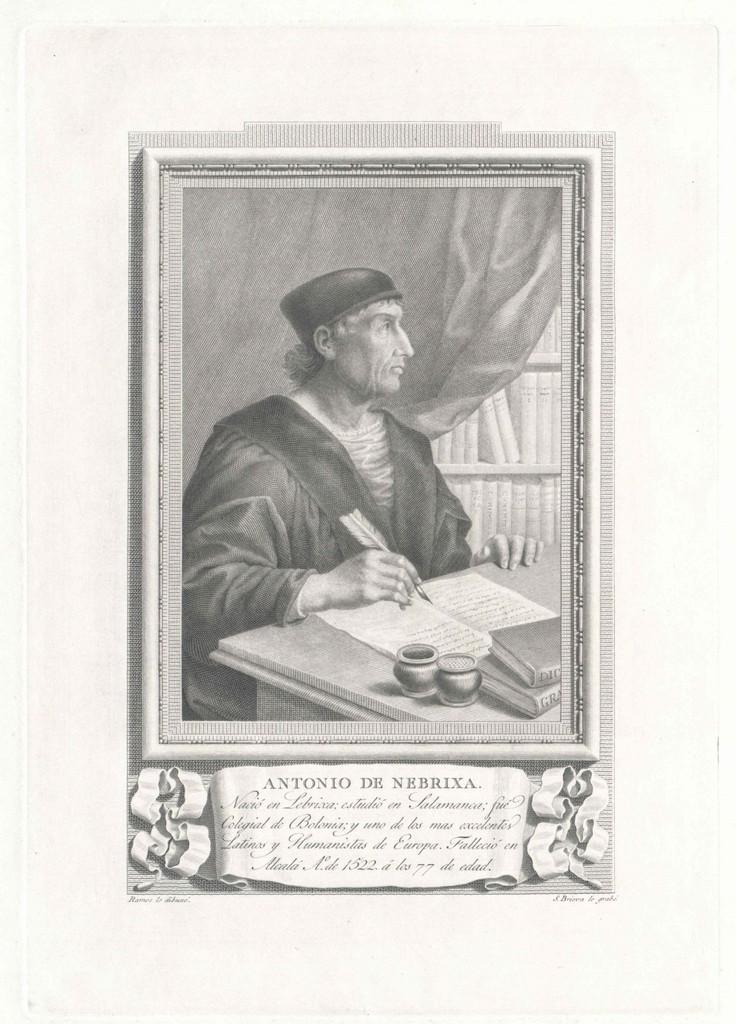
Antonio de Nebrija
19. Spanish is considered the most romantic language in the world
Because of its passionate and sensual sound, you can easily understand why Spanish is said to be the most romantic language in the world. It is widely spoken, and just as any other Romance language, sounds very romantic compared to other countries with harsher mother tongues, like the UK or Russia.
Compared to Germanic languages (like German or English), Spanish has softer consonants and longer vowels, creating a smooth word flow. Since it is easier to create rhymes in Spanish, the language is ideal for poetry and music.
20. “C” is pronounced differently depending on where you come from
This last fact is actually one of the examples differing from Castilian Spanish to Latin American Spanish. When the letter “c” appears before either “e” or “i”, speakers in Latin America will pronounce it like a simple “s”. However, in Spain, you will rather hear “th”, like in “thank you”, in English!
This is yet another way of showing you how languages as a whole evolve over time. Cultures and traditions shape it however they want to through the centuries, and differences cannot be seen sometimes before centuries later.
And that’s it, those were the 20 Spanish language fun facts!
But don’t worry, if you want to learn more, feel free to keep reading, I still have tons of facts to tell you about:
More Facts!
Do you want even more facts about Spain?
Well, I have more facts about Spain, I’m sure you’ll love reading them!
Here’s the main guide of the best Spain facts 👉 All the Facts about Spain
Check out these facts by city/region:
- Facts about Madrid
- Facts about Catalonia
- Facts about Bilbao
- Facts about Barcelona
- Facts about Seville
- Facts about Granada
- Facts about Malaga
- Facts about Valencia
- Facts about Castilla la Mancha
Or these Spain facts by topic:
- Facts about Christmas in Spain
- Facts about Semana Santa in Spain
- Facts about religion in Spain
- Facts about schools in Spain
- Facts about Spanish food
- Facts about bullfighting in Spain
- Facts about sports in Spain
- Facts about music in Spain
Or click here to see ALL the facts up on the blog! Spoiler alert: there’s A LOT of them.
The Full List of the 20 Fun Facts About Spanish Language
- There are over 400 million Spanish speakers in the world
- Spanish is the official language in
- countries
- Spanish is a phonetic language
- Spanish has Latin roots, like Italian
- More and more people want to learn Spanish
- Arabic influenced Spanish a lot
- The United States will become the most important Spanish speaking country by 2050
- The language is ruled by the Royal Spanish Academy
- Spanish is a very easy language to learn
- Spanish was the official diplomatic language until the 18th century
- Exclamation and question marks are inverted in Spanish
- Spanish is also known as Castilian
- Spanish is classified as a Romance language
- The first Spanish text was written over 1,000 years ago
- The Spanish language has long sentences… and is poetic
- Spanish has some similarities with English
- There are multiple Spanish dialects and varieties
- Spanish grammar was published in 1492
- Spanish is considered the most romantic language in the world
- “C” is pronounced differently depending on where you come from
Share the knowledge! Click on the buttons below to share these facts with your friends, and help them learn more about the world 🙂
Pin this to Pinterest!
Enjoyed this guide? Then help a fellow traveler and pin it! They'll most definitely love you for it, 100% guarantee.
